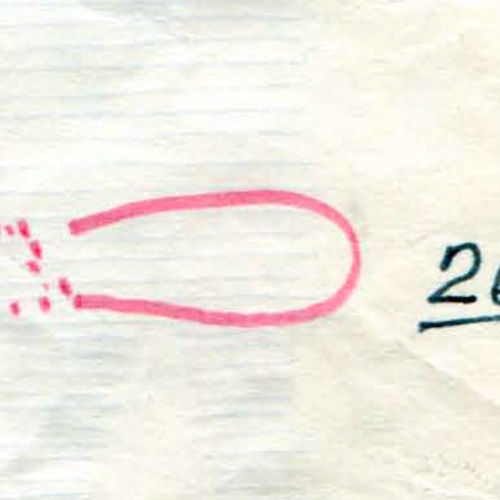| ID | #1563351091 |
| Added | Wed, 17/07/2019 |
| Author | July N. |
| Sources | |
| Phenomena | |
| Status | Hypothesis
|
Initial data
In 1883, an astronomer from the state of Zacatecas (Mexico) Jose Arbol and Bonilla took what is believed to be the first photograph of an unidentified flying object (UFO) in the world. The photo was taken from the observatory in the state capital.
On August 12 of the same year, an astronomer observed from his telescope a series of strange objects that crossed a straight line to the Sun. He noticed that he could easily photograph them, which he did.
The city of Zacatecas, in the nineteenth century, was a pioneer in the field of national and international astronomy and had the first two observatories in Mexico.
Jose Arbol and Bonilla have taken the initiative to ask the French government to provide them with what will be the first telescope in Zacatecas, as well as equipment for the meteorological observatory in Cerro de la Boufa.
In 1882, France donated to the Garcia Literary Institute, today the Autonomous University of Zacatecas, a telescope that would be used that year to observe the transit of Venus in front of the Sun. With the help of the same telescope, Jose Arbol and Bonilla took the first pictures of UFOs in the world in 1883, although it was later said that what was believed to be a UFO was nothing more than the remains of a comet.
A photograph of the alleged UFO was sent by the astronomer himself to the Paris newspaper L'Astronomie. They published the photo in a volume dedicated to 1885.
__________________________
On August 12, 1883, astronomer Jose Bonilla reported that during observations of the Sun at the Zacatex Observatory in Mexico, he registered more than 300 dark unknown objects crossing the solar disk. He managed to take several photographs of the observed phenomenon with an exposure of 1/100 of a second.
It was claimed that the objects taken were birds flying at high altitude, but Bonilla himself believed that he had managed to photograph unidentified flying objects for the first time.
In 2011, researchers from the National Autonomous University of Mexico suggested that unidentified objects may have been fragments of a collapsed comet passing within a few hundred kilometers of Earth.
Original news
En 1883, Jose Árbol y Bonilla, un astronome originaire de l’État de Zacatecas, au Mexique, a prit ce qui est considéré comme la première photographie d'un objet volant non identifié(OVNI) au monde. La photo a été prise depuis l'observatoire situé à Zacatecas, la capitale de cet État.
Le 12 août de cette année-là, l'astronome a observé depuis son télescope une série de tâches étranges qui se croisaient en ligne droite jusqu'au Soleil. Il remarqua qu’il pouvait aisément les photographier, ce qu’il fit.
La ville de Zacatecas, au XIXe siècle, était une pionnière dans le domaine de l'astronomie nationale et internationale et disposait des deux premiers observatoires du Mexique.
José Árbol y Bonilla avait pris l’initiative de demander au gouvernement français de leur fournir ce qui deviendra le premier télescope existant à Zacatecas, ainsi que du matériel pour l'observatoire météorologique situé à Cerro de la Bufa.
C'est en 1882 que la France remit à l'Institut littéraire de García, devenu aujourd'hui l'université autonome de Zacatecas, le télescope, qui servirait, cette année-là, à observer le passage de Vénus devant le Soleil. Avec ce même télescope, José Árbol y Bonilla captura les premières images d'un OVNI dans le monde, en 1883, bien qu'il ait été dit plus tard que ce que l'on croyait être un OVNI n'était rien de plus que les restes d'une comète.
La photo prise du supposé OVNI a été envoyée par l'astronome lui-même au journal parisien L'Astronomie. Ils ont publié la photographie dans un volume consacré à l'année 1885.
À présent, le télescope est situé dans l'unité académique d'ingénierie topographique de l'université autonome de Zacatecas. Il est en parfait état et peut être visité du lundi au vendredi de 20h00 à 22h00.
------------------------------------------------------------------
El Sol de Zacatecas en línea
Corría el año de 1883 cuando el astrónomo zacatecano José Árbol y Bonilla tomó la que se considera la primera fotografía de un Objeto Volador No Identificado (OVNI) en el mundo. La fotografía se captó desde el observatorio ubicado en la capital zacatecana.
El 12 de agosto el astrónomo observó desde su telescopio una serie de extrañas manchas que cruzaban en línea recta al Sol, mismas que pudo fotografiar. La ciudad de Zacatecas, en el siglo XIX, fue pionera de a nivel nacional e internacional en materia de astronomía, y contaba con los dos primeros observatorios de México.
José Árbol y Bonilla se dio a la tarea de gestionar ante el gobierno de Francia la donación del primer telescopio que existió en Zacatecas; además de equipo para el Observatorio Meteorológico que se encuentra en el Cerro de la Bufa.Fue en el año de 1882 cuando Francia entregó al Instituto Literario de García -hoy Universidad Autónoma de Zacatecas- el telescopio, mismo que serviría ese año para ver el paso de Venus frente al Sol. Con este mismo telescopio Árbol y Bonilla captó las primeras imágenes de un OVNI en el mundo, en 1883. Aunque posteriormente se dijo que lo que se creía era un OVNI no eran más que restos de un cometa.
La fotografía que se tomó del supuesto OVNI fue enviada por el propio astrónomo al diario parisino L’Astronomie. Publicaron la fotografía en un volumen que correspondió al año de 1885.Ahora, el telescopio se encuentra en la Unidad Académica de Ingeniería Topográfica de la Universidad Autónoma de Zacatecas, está en perfectas condiciones y presta servicio de lunes a viernes de 20:00 a 22:00 horas.
Hypotheses
Investigation
Resume
Similar facts
Log in or register to post comments










